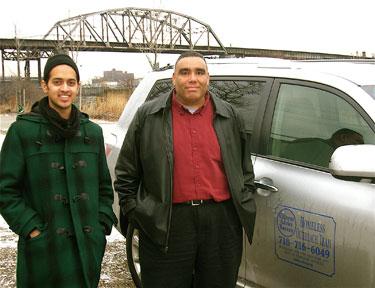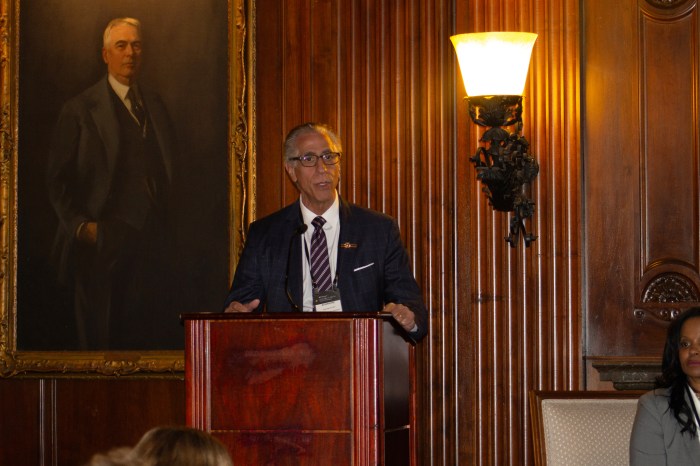For many New Yorkers, 2008 was a nightmare. Layoffs. Budget cuts. Fare hikes. Foreclosures.
For a handful of street homeless Bronxites, however, 2008 was a dream.
“I have a room,” said FB, a placid North Carolina native. “I have a set of keys. I eat a lot. I’m doing alright.”
For years, FB wasn’t doing alright. He was homeless.
With help from the Citizens Advice Bureau (CAB) street to home outreach team, FB has secured transitional housing. Soon, he’ll move into an apartment.
According to a NYC Department of Homeless Services survey conducted January 2008, 279 men and women live unsheltered on the borough’s streets. That’s a 52 percent drop since January 2005.
Bronx-based CAB launched its street outreach team in 1995. Three years later, it founded The Living Room, a federally funded 24-hour drop-in center where single homeless adults shower, receive counseling, watch television and sleep.
In 2005, DHS saw the light. The city held its first Homeless Outreach Population Estimate. A year later, DHS partnered with the Department of Sanitation to clear 70 homeless encampments. It also established NYC Street to Home, reallocating money from the city’s shelter system to outreach teams and housing programs.
“The city has finally figured out a way to bring single adults off the streets,” said Noel Concepcion, director of The Living Room.
Most street homeless are men. Most abuse drugs or alcohol. Half suffer from mental health problems, Concepcion said. NYC’s barrack-style shelters don’t necessarily work for them.
“The city’s new model is more attractive to street homeless people,” said Concepcion, who grew up in Castle Hill. “Getting them indoors is half the battle.”
Especially during the winter, when temperatures dip below freezing. On the Bronx’s coldest days and nights, DHS asks CAB to double its street coverage and check on frail homeless people every two hours.
Cold weather or fair, outreach teams hold the city’s new approach together. CAB’s coordinator, Taimur Khan, and his colleagues, crisscross the borough in SUVS to check on old friends and root out the Bronx’s most stubborn street homeless.
“These guys are the best,” said FB, who earns money “hustling” in and around a Hunts Point brickyard. “Because they listen. That means a lot – sharing your troubles with someone.”
On Friday, January 2, Khan and Concepcion cruised by a dozen street homeless hotspots: beside the Bronx River, down Fordham’s Aqueduct Walk, below the Sheridan Expressway. Khan crept into a Bronx Park tunnel.
“I recently found three men sleeping here,” he said. “Drinking to keep warm. We moved them to a Safe Haven.”
Safe Havens are NYC’s newest type of transitional housing. Barrier-free and light on restrictions, they cater to street homeless adults who abhor the shelter system. CAB will open its own Safe Haven this summer.
Khan works with seven outreach specialists and ten case managers. Their main function: guiding street homeless adults through housing interviews and paperwork. Roughly half of their clients opt for supportive housing. The others receive Section 8 rent vouchers.
The city has asked housing providers to loosen sobriety regulations, and it’s paid off, Concepcion said. Once indoors, street homeless adults find it easier to stay sober.
Street outreach is challenging, of course. One CAB team member picked up a distressed homeless man, and then watched him die en route to the hospital.
On January 2, Khan and Concepcion visited Celeste Diner, a derelict structure stripped of metal and littered with broken glass and mustard packets. Celeste Diner isn’t close to safe, but at least one woman lives there.
“A lot of the street homeless women engage in prostitution,” Khan said. “It’s their only way to make money.”
Concepcion is quietly proud of CAB’s outreach team. He’s seen the borough’s street encampments dwindle and its worst blocks fall silent. Concepcion expects a positive HOPE 2009.
“Sure, I worry at night,” he said. “I think, ‘Did I miss somebody?’ But I also think about this one gentleman. He has a hunchback. He’s a heroine addict. We started with him in the mid-1990s. We placed him in permanent housing last year.”
Register to volunteer for HOPE 2009 online at https://hope2009.cuny.edu/welcome.aspx. If you are concerned for a homeless person on the street, call 311.





















